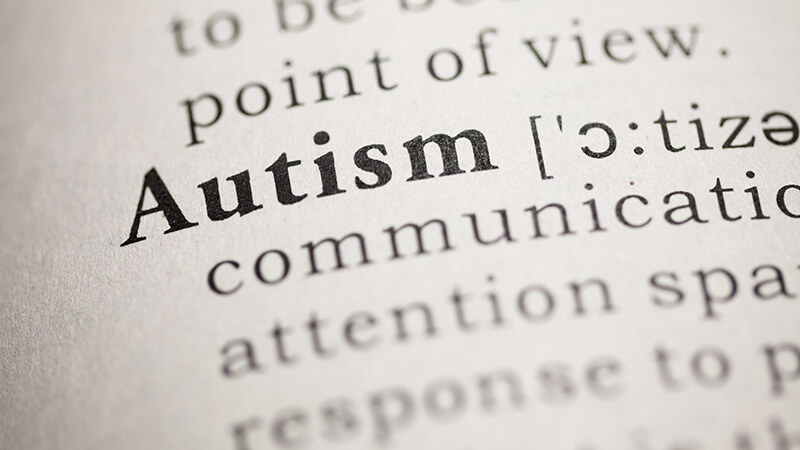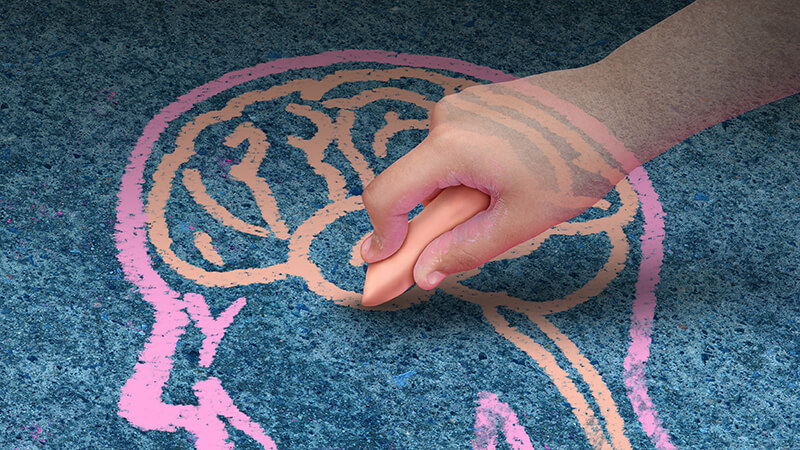Parents and educators often see the challenges children with autism face. These children can find it hard to connect with others and handle social scenes. This problem affects many families with a member who has Autism Spectrum Disorder (ASD) every day. But there’s hope. Social skills training can really change things for those with ASD. It helps them form true friendships, talk better, and enjoy their community more.
At New Directions For Young Adults (NDFYA), we get the struggles of individuals with autism and their families. Our goal is to offer full support and resources for social skills growth. Our skilled team works hard to assist individuals with ASD in learning how to communicate, understand their feelings, and make friends. This helps them succeed in life in many ways.
Studies have proven social skills training works well for those with ASD. Traditional face-to-face training (F2F-SST) and technology-based training (BITs-SST) both show big benefits. For example, F2F-SST has a positive g value of 0.811. And BITs-SST is even more effective, with a g value of 0.931. This shows social skills programs can truly change lives.
At NDFYA, we have plenty of fun activities to boost social skills. We offer things like Dine Around and Cooking Group, Field Trips, Movie Night, and more. These events help individuals with ASD work on their social skills. They also get to make friends and try new things. This makes them feel more included and capable of handling life’s challenges.
This guide will walk you through many parts of social skills training for autism. You’ll learn about diagnosis, strengths and needs, using proven strategies, and working with others. By the end, you’ll have lots of tools to help your child or student with ASD thrive socially.
So, join us on this journey to make a real difference. With the right know-how, care, and support, individuals with autism can do great in their social lives – and beyond.
Key Takeaways
- Social skills training is crucial for those with Autism Spectrum Disorder (ASD) to interact well, make friends, and stay safe.
- Studies highlight the benefits of both in-person and tech-based social skills programs for those with ASD.
- New Directions For Young Adults (NDFYA) provides many fun activities to help with social skills in a supportive setting.
- This guide will explore important areas of social skills training, including how to diagnose, spot individual needs, use proven methods, and work with others.
- With the correct knowledge and guidance, individuals with autism can do very well in their social lives and more.
Understanding Autism Spectrum Disorder
Autism spectrum disorder (ASD) is a condition affecting how people connect with others and behave. It makes it hard for them to interact, communicate, and they often have a few special interests. The DSM-5 explains that to have ASD, a person must show problems in talking with others and have behaviors that they keep doing again and again2.
Definition and Diagnostic Criteria
To get diagnosed with ASD, someone must have trouble communicating and interacting with others. They also have activities or habits they always do. These issues start in early life and make it hard for them at school, work, or in making friends.
Social Communication Challenges
People with ASD find it hard to develop social skills on their own. They need clear guidance and real-life practice2. They might struggle with sharing feelings, showing nonverbal cues, and connecting with others. Teaching them social skills in regular settings can boost their friendships and reduce feelings of loneliness (ES = 0.47–0.51)1.
Restricted and Repetitive Behaviors
Another key sign of ASD is doing the same things over and over. This can be in how they act, what they use, or even say. They might really like certain topics and get upset if their daily routines change. These habits can make it tough for them to join in with others or build close friendships.
Good teaching programs for people with autism will be well-organized and use clear, simple language. They should promote working together and offer different ways to learn2. By working on these challenges, social skills training can improve their life quality and their ability to have good social interactions. Studies show this kind of training really helps, with big improvements possible (g = 0.81 and g = 0.93)1.
The Importance of Social Skills Training for Individuals with Autism

Training focuses on talking face-to-face and using technology like apps1. A study checked 14 face-to-face talks and 4 using technology. Both helped a lot, with technology being a bit better. Talking in person made people better at social skills. Using apps alone helped decrease some social problems1.
Enhancing Quality of Life
Promoting Independence and Self-Advocacy
Places like New Directions For Young Adults offer cool stuff to do together. They have Dine Around, Cooking Group, and more fun. These help practice talking in real life and making friends2.
Key Components of Effective Social Skills Training
Training in social skills for those with autism is key. It looks at what they’re good at and what they struggle with. By noting their skills and setbacks, experts make plans to boost their abilities to connect.
Assessing Individual Strengths and Needs
First, we need to really see what someone with autism is great at and what they need help with. This points us to where they shine and where we should help them grow. Challenges in social skills are a big part of autism3. So, it’s important to look at the whole picture when figuring out how best to help them.
There are several ways to check someone’s social skills. Some look at what they say and do in tests or interviews. Others watch them in different places to see how they act. And some just talk or act out to see how they might handle real situations.
These tests help to spot common problems kids with autism face. They might have trouble talking, be really fixated on certain things, or not like to share.
Setting Realistic Goals
After finding out where help is needed, the next step is to make achievable goals. These goals need to be clear, trackable, doable, important, and have set times to finish. This way, progress is clear, and it helps boost their confidence along the way.
Utilizing Evidence-Based Strategies
The best social training for autism uses approaches backed by science. One common approach is using behavior changes to support learning new skills. Another is about changing how someone thinks to change how they act and feel3.
A method called Applied Behavioral Analysis (ABA) is often used. It works by changing what kids see and do to change bad habits into good ones. Strategies like video modeling and using pictures to help communicate also make a big difference3.
| Approach | Focus | Strategies |
|---|---|---|
| Behavioral | Altering observable events in the environment | Cueing, modeling, prompting, reinforcing positive behaviors |
| Cognitive Behavioral | Changing behavior by altering individual interpretations and perceptions | Identifying and challenging negative thoughts, developing coping strategies |
| Relationship-Based | Developing trust and strong relationships | Fostering secure attachments, promoting social-emotional development |
A study compared in-person and tech-based social training for autism. The two approaches were found to be equally good. This shows that both ways can really help kids do better in social settings, as long as these methods are well-tailored.
With the right approach, we can help those with autism do well in social settings. This doesn’t just make them better at talking and making friends. It makes a big difference in their life quality and overall happiness.
Teaching Joint Attention Skills

One way to teach joint attention is by getting the child interested in an item. Then, you get them to look back at you. Finally, you teach them to ask you about it. This helps them focus and share with others4.
Developing Shared Focus
Encouraging Initiating and Responding
Making kids start and reply is key in teaching joint attention. Some methods have been proven to work well. They help kids with autism learn to communicate better5. These methods focus on guiding the child to ask and respond. But, not all kids learn the same way, so sometimes a different approach is needed5.
Fading out the instructor’s help can be done with reinforcement and new step challenges4. Some kids might need special plans if the usual ones don’t work. Using videos or specific prompts might help. Breaking down social skills into simple steps makes it easier for kids to learn. It helps them use these skills in many different places.
Enhancing Play Skills
Play is key for children with autism to learn social skills. It lets them practice talking and making friends. By learning how to play together and use their imagination, kids with autism can get better at making friends. They can also learn how to enjoy talking and spending time with others6.
Teaching Cooperative Play
Cooperative play is about working with others for a shared goal. Kids with autism might find this hard at first because they may not know when to take turns or share. Yet, setting up certain social games helps them learn. With these games, they start to understand how to work together. This can include solving puzzles or playing board games as a team6.
Kids can learn a lot from playing with others who are good at being social6. So, letting someone who’s really good at making friends play with a child with autism can help a lot. This way, the child with autism can watch and learn how to join in the fun. And remember, some kids with autism are great at things like being funny, remembering information really well, and being good with their hands. We can use these talents to make playing and making friends even more fun6.
Fostering Imaginative Play
Imaginative play is when kids act out different roles and stories. It’s not just fun; it helps them learn to relate to others and use their imagination. But, some kids with autism find it hard because it requires imagining things that aren’t there and understanding social hints.
Learning to care about how someone else feels and to take turns is also important in play6. By showing kids with autism the right way to react to others, they learn a lot. They get to practice these skills in activities like those offered by NDFYA. These real-life chances help kids with autism get better at playing and making friends in different places2.
| NDFYA Activity | Social Skills Targeted |
|---|---|
| Dine Around | Conversation skills, table manners, ordering food |
| Cooking Group | Collaboration, following instructions, turn-taking |
| Field Trips | Social interaction in new environments, flexibility |
| Movie Night | Discussing shared interests, appropriate theater behavior |
| Bowling | Turn-taking, sportsmanship, cheering for others |
| Game Night | Following rules, strategy, handling winning/losing |
| Sports | Teamwork, communication, physical coordination |
| Jiu-Jitsu | Self-regulation, respect, non-verbal communication |
Through many types of play and support, social skills training can really make a difference for kids with autism. It makes them better at making friends and talking with others. Working on social skills doesn’t just help them play more. It can also make them happier and help them have more friends. This is important for everyone because everyone likes to have friends2.
Practicing Social Situations
Learning social skills is key for people with autism. They practice with role-playing and modeling exercises. These activities help them feel safe and gain confidence for real-life talks.
Role-Playing and Modeling
In social skills training, role-playing and modeling are super helpful. Imagine fake social scenes to learn new skills. The PEERS program at UCLA is great for this2. It makes hard social stuff simpler. Learners can practice starting talks or showing they care bit by bit.
Providing Opportunities for Generalization
It’s important to use learned skills outside of class too. So, learners should try their new skills at the mall, during games, or at parties. When things are structured and fun, they learn better together2. Success in new places helps them feel good and learn more.
Offering Feedback and Reinforcement
Getting feedback and praise is crucial. It helps people with autism understand and improve their skills. Rewards also help them keep doing good things. Classes and special stories, like ones from the READI Lab, support this well2. Good feedback helps them get really good at socializing.
| Strategy | Description | Benefits |
|---|---|---|
| Role-Playing and Modeling | Simulated social scenarios to practice specific skills and behaviors | Develops confidence and refines social skills in a controlled setting |
| Providing Opportunities for Generalization | Applying learned skills to various real-life situations | Builds adaptability and success in diverse social contexts |
| Offering Feedback and Reinforcement | Timely, specific, and constructive feedback; positive reinforcement | Encourages repetition of desired social skills and behaviors |
Autism Speaks can help you find local programs2. Teachers also use cool ways, like games, to help kids make friends. These proven methods make life better for people with autism. They make it easier to connect with others.
Social Skills Training and Autism: A Perfect Fit
Social skills training is key for those with autism, needing help to learn life skills and emotional intelligence. New Directions For Young Adults (NDFYA) offers lots of support. They know peers can help a lot and have activities that fit to boost social skills for young adults on the spectrum.

NDFYA believes in the power of doing together. They found volunteering, joining community programs, and interesting hobbies helpful. Things like puppeteering and writing bring young adults closer.
Even cool activities like horseback riding, music classes, drum circles, and music concerts work well7. Each case is unique. What works, differs for everyone.
Our program is packed with fun activities that help with talking to others and feeling sure of oneself:
- Dine Around: Participants learn to navigate social situations in restaurant settings, practicing communication and etiquette skills.
- Cooking Group: Collaborative cooking sessions foster teamwork, communication, and problem-solving abilities.
- Field Trips: Engaging in community outings helps participants apply social skills in real-world contexts.
- Movie Night: Watching and discussing films together encourages perspective-taking and empathy development.
- Bowling: This classic group activity promotes turn-taking, sportsmanship, and casual conversation skills.
- Game Night: Board games and other interactive activities help build social bonds and enhance problem-solving skills.
- Sports: Participating in team sports encourages cooperation, communication, and healthy competition.
- Jiu-Jitsu: This martial art teaches self-discipline, respect, and non-verbal communication skills.
Dr. Damian Milton speaks to the challenges in understanding between those on the spectrum and those not. He calls for a deep sharing of understanding and acceptance7.
NDFYA tackles social skills in a broad way. They include key topics like understanding your feelings, knowing when others like or dislike something, and how to ask for and give permission. Their approach shows how important it is to cover many areas to help those with autism fully. It makes a real difference in their lives and helps them become independent.
Incorporating Technology in Social Skills Training
Technology is making it easier for people with autism to learn social skills. It offers new and fun ways to practice. This is helpful, especially in talking to others and making friends.
Video Modeling and Social Stories
Video modeling and social stories help those with autism. Video modeling shows videos of good social skills. Then, you get to practice them in real life. This is great for people who don’t learn well in other ways1.
Social stories are short tales that explain social rules. They can be in words, pictures, or sounds. They help make tough social situations easier to understand. Social stories help people with autism feel more confident in social settings8.
Virtual Reality and Gaming
Virtual reality (VR) and games let people with autism practice in safe places. They create worlds like real life. This helps everyone learn at their own pace9.
| Technology-Based Intervention | Benefits for Social Skills Training |
|---|---|
| Video Modeling | Visual learning approach, helps understand and practice specific social skills |
| Social Stories | Breaks down complex social scenarios, provides guidance on appropriate responses |
| Virtual Reality | Immersive experiences, simulates real-life situations, allows for repeated practice |
| Gaming | Encourages collaboration and communication, fosters essential social interaction skills |
While tech can help with social skills, it’s important to know it might need some human help. More big tests are also needed to be sure it really works. Still, using tech in training is a good way to help people with autism. It can make them more independent and better at talking with others.
Collaborating with Parents, Educators, and Therapists
Helping those with autism learn social skills needs everyone to work together. Parents, educators, and therapists all team up. This teamwork makes sure everyone’s teaching the same thing. And it helps the person with autism use social skills in many places.
Consistency Across Environments
It’s important that social rules are the same at home, school, and therapy. Everyone working together makes this happen. By sharing tips and using the same strategies, we can teach social codes well.10.
Empowering Caregivers with Strategies
Parents get helpful ways to teach social skills at home and deal with sensory issues. By working as a team, caregivers and therapists can see real progress11. They talk openly and make plans together. This approach really helps those with autism grow.
At New Directions For Young Adults (NDFYA), we believe in working together to help those with autism. Our activities focus on real-life social skills, including:
- Dine Around
- Cooking Group
- Field Trips
- Movie Night
- Bowling
- Game Night
- Sports
- Jiu-Jitsu
These events let people with autism practice their social skills. They also make friends and enjoy life more. Parents, educators, and therapists help make this happen.
Working together, we help young people with autism succeed. Supporting each other is key to their growth.
To really help those with autism, we must all work together. Sharing our plans and keeping things consistent can make a huge difference. This way, everyone who helps them can bring about meaningful change.
Success Stories: Real-Life Experiences of Individuals with Autism
Success stories show how social skills training helps people with autism. They tell about a better life and more independence. This training really makes a difference.
“I want to be a voice for the voiceless. I want to be able to help people understand that we’re not just a diagnosis. We’re people, too.” – Kaelynn Partlow
These stories remind us how important social skills training is. They encourage those with autism to find support. With the right help, people with autism can achieve a lot and bring so much to the world.
Conclusion
Social skills training is key for those with autism spectrum disorder. It aids in gaining communication skills, bettering social interaction, and building empathy and emotional intelligence. Recent studies show both face-to-face and online training work well. They help youth with ASD do better in making friends and improving social skills1. While being with a person who can train you works, online programs are good too. Both are effective in making things better for those with ASD1.
Getting to these training sessions might be hard. This is because of the need to have a clinician, a way to get there, lots of time, and few people trained to help with ASD. This is harder on those with little money or from certain groups1. Working together is key to fixing this. Parents, teachers, and therapists should join hands and use the best methods and tools. This includes behavioral therapy and learning together with others. Making sure everyone is teaching the same way helps a lot. It makes training more effective. This helps those with ASD become successful in life.
Places like New Directions For Young Adults (NDFYA) do a great job. They offer big programs that mix learning with fun activities. Things like Dine Around, Cooking Group, and Sports help a lot. These let people with ASD learn and feel what it’s like to be out with others. They get to make friends and enjoy life more. It’s important to keep improving how we teach social skills. Making it easy to learn and work together is important. This way, everyone with ASD gets to learn skills they need to do well in life.
FAQ
What is social skills training for individuals with autism?
Why is social skills training important for individuals with autism?
What are the key components of effective social skills training for individuals with autism?
How can technology be incorporated into social skills training for individuals with autism?
What role do parents, educators, and therapists play in social skills training for individuals with autism?
Can social skills training lead to long-term benefits for individuals with autism?
Source Links
- https://www.ncbi.nlm.nih.gov/pmc/articles/PMC7670840/
- https://www.autismspeaks.org/social-skills-and-autism
- https://pecsusa.com/download/Teaching Social Skills-Chapter 7.pdf
- https://howtoaba.com/how-to-teach-joint-attention-to-children-with-autism/
- https://www.ncbi.nlm.nih.gov/pmc/articles/PMC6411543/
- https://www.autismspeaks.org/tool-kit-excerpt/autism-and-social-skills-development
- https://autismawarenesscentre.com/rethinking-social-skills/
- https://www.sciencedirect.com/science/article/abs/pii/S1750946711000286
- https://scholarworks.wmich.edu/cgi/viewcontent.cgi?article=1808&context=ojot
- https://www.apexaba.com/blog/the-abcs-of-autism-education
- https://fastercapital.com/topics/collaboration-with-parents-and-caregivers-in-autism-education.html
- https://autismspectrumnews.org/an-autistic-womans-success-story-kaelynn-partlow-therapist-dog-trainer-and-star-of-the-hit-netflix-series-love-on-the-spectrum/





